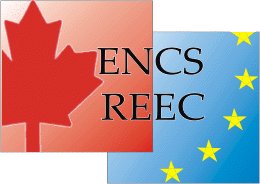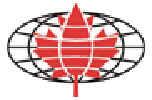Guidelines for submitting / Indications rédactionnelles
- Written by Super User
General guidelines:
The printout of your essay in final form ready for publication should be accompanied by a diskette (please use Word for Windows; MacIntosh Apple cannot be handled by us).
The manuscript can be in English or French.
Please give your name, address, telephone (and fax number and e-mail address, if available) on a separate sheet.
Texts composed in English by non-native speakers should be submitted to and examined by a native speaker before being submitted. It is not the task and responsibility of the editors to provide linguistic and stylistic corrections.
Articles should be accompanied by abstracts in both English and French of no more than twelve lines each. Book reviews and Reports do not, of course, need abstracts; the templates for these items provide the outline for the appropriate form.
Format:
To reduce the amount of editorial work necessary we enclose a template with predefined text styles to use for preparing your manuscript. This means that you do not have to worry about technical matters such as size of type, indentation of paragraphs, line spacing, whether to use bold type or not, etc. etc.
The various parts of the paper are indicated (e.g. Author, University, Title, Endnotes, Works cited, etc.) and samples of text and of quotations of more than 3 lines are included. When you are entering the information for each of these categories (or the text of the article or quotations of more than 3 lines) simply replace the instructive word (i.e. those listed above) or the passage of text or quotation with your information/text. You can also select the proper format by clicking on the "styles" roll-down menu next to the indication of the font on the "format" bar. Notice that each part of the paper has a style name assigned to it. This style name appears on the "styles" menu on the "format" bar,here you can find a complete list of the styles used in your document. Author, Normal, Heading 1, Basic text, Quote are a few examples of style names. To see how styles work, move the cursor somewhere inside the sample quotation in the included file "template.doc". The "styles" roll-down menu is now where the word "quote" appears on the screen. Now select a different style (e.g. "Title") from the same menu. The formating of the quotation is now changed to that of the title of the paper. You can assign style names to parts of text in much the same way as you would emphasize a text in bold or in italics - by selecting the text and choosing the corresponding style from the "styles" menu. Using styles can save you a lot of work since several "formatting operations" are performed at the same time when you choose a style name. For example: assign "quote" to an arbitrary part of your text. As you can see, the text becomes indented on both sides and slighly set off from the rest of the text. Without using styles, you would need at least four operations to achieve this formating.
The formating does not automatically solve the following points.
References within the main text
1. Within the text, numbers indicating endnotes should be raised, and come after "quotation marks."1
2. References in the text and in the endnotes (to books included in the "Works cited") are to be given in shortened form: Parenthesis - author's surname - comma - year of publication - comma - page number - parenthesis. Examples:
Hoerder, 2000, 111-136.
Hoerder et al. (eds.), 1995.
Cf. Stanzel, 1979 a, 1979 b.
Notes and Bibliography:
Notes are to be given as endnotes following the body of the text before the final bibliography.
The bibliography should include all titles mentioned in the text.
Sequence (for book titles): Surname, First Name (in full). Title (italics). Place of Publication: Publisher,Year of Publication. Examples:
Kroetsch, Robert. The Studhorse Man. Toronto: Macmillan, 1969.
Hassan, Ihab and Hassan, Sally (eds.). Innovation/Renovation: New Perspectives on the Humanities. Madison: University of Wisconsin Press, 1983.
For second and subsequent entries for one author: use ten hyphens followed by a full stop, like this, ----------. instead of the author's name.
Titles of essays and unpublished work to be given between double quotation marks. Titles of journals in italics. Example:
Clement, Wallace. "Searching for Equality: The Sociology of John Porter". Canadian Journal of Political and Social Theory 8, 1 (1980): 97-104.
Indications rédactionnelles
Généralités:
Nous souhaitons recevoir à la fois le texte et la disquette correspondante (système de traitement de texte Word Windows. Nous ne pouvons pas accepter des textes traités avec les programmes McIntosh (Apple).
Nous acceptons des manuscrits en langue anglaise et française.
Mettez votre nom, adresse, numéro de fax et adresse e-mail sur une feuille sepárée, s'il vous plaît.
Les auteur/es dont la langue maternelle n'est pas le français sont prié/es de faite contrôler leurs textes (étude, résumé, curriculum vitae) par quelque "native speaker" qualifié. La rédaction ne prend pas des responsabilités concernant le niveau linguistique des textes.
Les articles devraient être accompagnés par un résumé en anglais et en français, de douze lignes au maximum. Les comptes rendus et les rapport ne nécessitent pas de résumé; les textes modèles pour ces travaux donnent l'idée de la forme appropriée.
Le texte de l‘étude:
Pour faciliter les choses, nous avons inclu un texte modèle avec des styles prédéfinis. Cela signifie que vous ne n'êtes pas obligé de vous préoccuper des choses techniques concernant la taille des caractères, le texte gras, etc.
Les différentes parties du texte sont indiquées (par exemple Auteur, Université, Titre, texte, citation à partir de 3 lignes, etc.) Pour fournir vos coordonnées (nom, université, ...), il suffit de remplacer le mot-modèle. En plus, vous pouvez choisir le format désiré en cliquant sur le menu des „styles" à côté du menu taille du texte. Remarquez que chaque partie du texte porte un nom de style. Ce nom se trouve dans la barre du menu „styles". Author, Normal, Heading 1, Basic text, Quote représentent des exemples de noms de style. Pour voir comment les styles fonctionnent, placez le curseur à l'intérieur de la citation du texte-modèle „modele.doc". Le menu „styles" est là où se trouve le mot anglais „quote" sur l'écran. Maintenant, choisissez un style différent (e.g. „Title") du même menu. Le format de la citation est changé et ressemble à celui du titre de la communication. Vous pouvez assigner les noms de style de la même manière que vous mettez une partie du texte en gras - en marquant le texte et en choisissant le nom du style du menu „styles". En utilisant les styles, vous pouvez économiser beaucoup de temps, vu que plusieurs opérations de format sont accomplies à la fois. Par example: assignez „quote" à une partie quelconque du texte. Remarquez qu´au moins 4 opérations différentes de format sont accomplies sur le texte en même temps.
Le format indiqué ne remédie pas les problèmes suivants.
Références à l'intérieur du texte principal
À l'intérieur du texte, les numéros des notes figurent après les signes de ponctuation".1
À l'intérieur du texte et dans les notes, les renvois aux sources sont à abréger comme suit: parenthèse auteur année virgule page parenthèse. Exemples:
Hoerder 1985, 77.
Kirsch et al. (éd.) 1985, 77-89.
Zacharasiewicz/Kirsch (éd.), 27 s.
Cf. Von Bredow, 1979a, 1979b.
Notes et bibliographie:
Les notes apparaissent en bloc à la fin de l'étude, avant la bibliographie.
Si le même auteur est nommé plusieurs fois, mettez Id. à la place du nom.
La bibliographie doit contenir tous les titres mentionnés dans le texte.
Titres d'articles et textes inédits apparaissent entre guillemets.
Classer les indications bibliographiques par ordre alphabétique (noms de famille des auteurs) et par années de parution. Exemples:
Kirsch, Fritz Peter 1992: "La Civilisation et la barbarie. Considérations sur les rapports entre les littératures de langue française", Cahiers d'Études francophones d'Europe centre-orientale 2 1992, 37-56.
Arendt, Elisabeth/ Kirsch, Fritz Peter (éds.) 1998: Der erwiderte Blick/ Regards sur le Maghreb - Regards sur la France, Würzburg, Königshausen & Neumann.
Kirsch, Fritz Peter 2000: L'Écrivain au carrefour des cultures, Bordeaux, PU.





